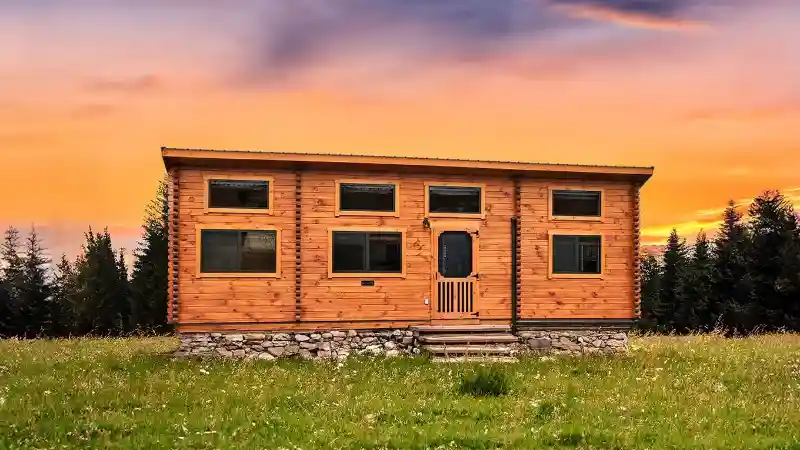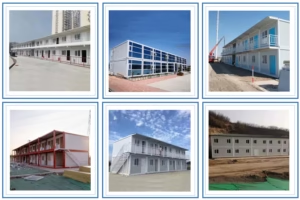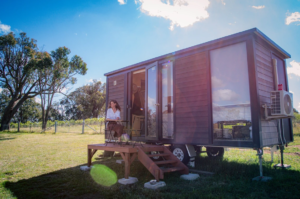Shipping containers – those corrugated metal boxes – are commonly used for moving freight on cargo ships, trains, and trucks. Once they reach the end of their lifecycle, they’re often relegated to landfills or junkyards. However, buying a shipping container home gives these containers a second life, transforming them into unique and sustainable living spaces!
These types of homes are also known as container houses and have seen a surge in popularity due to being cheap, relriable, eco-friendly, and easy to build. In this article, we will talk about the details of the houses and what inspiration can be drawn from it.
What Is A Shipping Container Home?
These sorts of homes can be defined as a form of alternative housing made out of metal vessels known as shipoing containers. They come in sizes of about 160 and 320 square feet which is relatively small compared to conventional housing. Their size comes in handy for people who wish to build eco-friendly homes as they are quite literally a box that can be recycled in form of a quest of building. This is one of the main reasons as to why container homes have seen great popularity of the tiny home movement .
Shipping Container Home Designs And Inspiration
When building a shipping container home, there are a plethora of design choices. Let’s take a look at some of the more widely accepted designs:
Single Container
The single container is one of the most popular designs because it’s easy to access and simple to work with. This type features a single-story rectangular home with an interior reminiscent of a shotgun house, where one room leads directly into the next.
The benefit of a single container home lies in its simplicity and straightforward design. However, it offers less space and can be less visually interesting compared to other multi-container options.
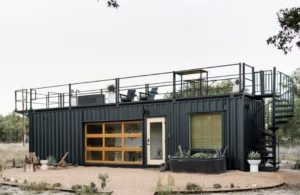
Stacked
The configuration of stacked containers involves adding a second layer to the pod which increases the interior space. The layout, however, remains a single slender pod.
The available area is most certainly an advantage of stacked containers. However, additional precautions should be taken to guarantee the wall structure remains intact and under control. Furthermore, access to the upper floor must be facilitated by an internal or external staircase.

Side-By-Side
Containers placed beside each other are best suited clients requesting for more floor space a greater level of room segregation. This approach utilizes two or more containers placed adjacently to each other.
Unlike stacking, side units are less complicated to build while providing a 100% increase in space. They do, however, take up more footprint area which can be a disadvantage based on the selected site location.
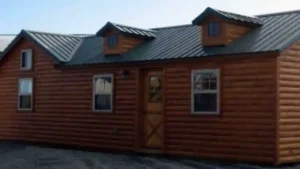
Crisscross Stack
A more artistically elegant design can be achieved when units are placed one on top of another at a right angle to the unit below creating a crisscross pattern.
This approach not only provides additional square meters, but also gives a fresher and more appealing view of the house compared to other traditional styles.

Sculptural
For the strongest and most graphic design scheme, a sculptural house can be created by using creatively clustered containers placed at unusual angles.
This design appears to be the most visually attractive, furthermore entails extensive pre planning to ensure effective cohesion of the measured spaces.

Apple Cabin House(Cabin)
If the industrial look doesn’t appeal to you, consider wrapping the container in wood boards or stacked logs to achieve a cozy cabin aesthetic.
This way, you’ll enjoy the sturdy frame of the container while customizing the exterior to match your preferred style.
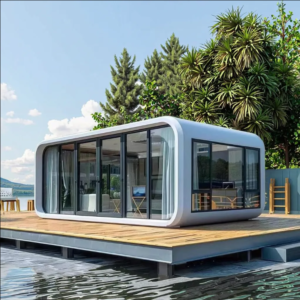
Pros And Cons Of Shipping Containers As Homes
Before investing in a shipping container home, it’s essential to weigh the pros and cons:
Pros
- Affordability: Constructing a shipping container home is one of the most cost-effective ways to build a house. Even high-end prefabricated units cost less than many standard homes.
- Durability: Made from sturdy, weather-proof materials, shipping containers are designed to withstand harsh elements.
- Efficient Construction Process: Since containers are built for mobility, delivery and setup times are often much faster than traditional home construction.
- Customizability: Thanks to their modular design, containers can be arranged in numerous configurations, making it easy to tailor the home to your tastes.
- Eco-Friendliness: Repurposing shipping containers reduces waste and promotes sustainability, making these homes an attractive option for environmentally-conscious buyers.
Cons
- Legal Restrictions: Zoning laws and building codes can be tricky, as not all areas are accustomed to container homes.
- Limited Insulation: Additional insulation is necessary to ensure comfort, but this can take up valuable interior space.
- Structural Concerns: Cutting containers for doors and windows can compromise structural integrity if not properly reinforced.
- Potential Toxins: Used containers may harbor hazardous materials, so proper inspection and treatment are crucial.
- Availability: Not all containers are suitable for housing; rusted or damaged units may require extensive repairs.
How Much Do Shipping Container Houses Cost?
The cost of a shipping container house varies depending on factors like size, condition, location, and desired features. Here’s a general overview:
| Type of Shipping Container Home | Average Cost |
|---|---|
| Single (no plumbing) | $10,000 – $20,000 |
| Single (with plumbing) | $15,000 – $25,000 |
| 2-3 containers | $25,000 – $130,000 |
| 3-4 containers | $130,000 – $180,000 |
DIY enthusiasts can expect to pay around $2,300 – $8,300 for a single container, depending on size and quality. Additional costs such as land, customization, and utilities should also be factored in.
Shipping Container Home FAQs
- How long do shipping container homes last? Shipping container homes can last 25 years or more if properly maintained.
- Do storage container homes hold value? While still a relatively new trend, the affordability and sustainability of container homes suggest they may retain value.
- How long does it take to build a shipping container home? Depending on the complexity, these homes can be move-in ready in as little as a month.
- What’s the standard size of a shipping container home? Containers typically measure 20 by 8 feet (160 sq. ft.) or 40 by 8 feet (320 sq. ft.), with heights of 8.5 feet or 9.5 feet for high cubes.
- Can I get a mortgage for a shipping container home? Financing options vary. Some lenders require the home to be on a permanent foundation, while others may offer personal loans instead.
Ready To Start Your Shipping Container Home Journey?
If you’re ready to take the first step towards owning a shipping container home, we’re here to help. At WeiFang Carter, we specialize in high-quality shipping container homes that combine innovation with comfort. Contact us today for more information:
- Alibaba International Site: Carter House on Alibaba
- WhatsApp: +86-13081655379
- Email: admin@carteroom.com
Transform your living experience with a stylish, eco-friendly shipping container home today!
